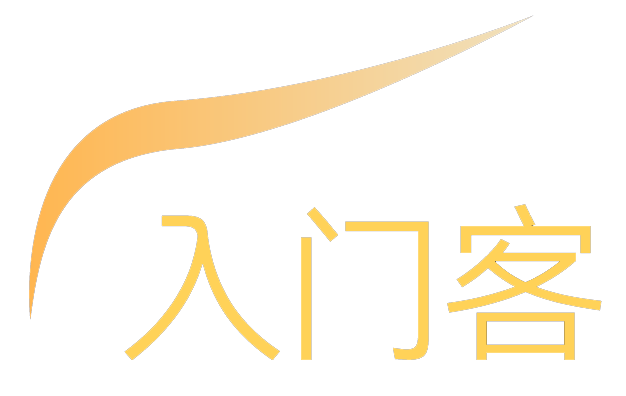vue.js2.0父组件点击触发子组件方法
<body>
<div id="counter-event-example">
<p>{{ total }}</p>
<button-counter v-on:ee="incrementTotal"></button-counter>
<button-counter v-on:ee="incrementTotal"></button-counter>
</div>
<script>
Vue.component("button-counter", {
template: "<button v-on:click="increment">{{ counter }}</button>",
data: function () {
return {
counter: 0
}
},
methods: {
increment: function () {
this.counter += 1
this.$emit("ee", "cc" )
}
},
})
new Vue({
el: "#counter-event-example",
data: {
total: "arg"
},
methods: {
incrementTotal: function (b) {
this.total = b + "1";
}
}
})
</script>
</body>
子组件通过$emit触发父组件的事件,$emit后面的参数是向父组件传参,注意,父组件的事件处理函数直接写函数名即可,不要加(),参数直接传递到了父组件的methods的事件处理函数了。
另外,写一个小拾遗。vue子组件用了定义模板组件功能,然后在父组件里定义一个HTML元素绑定这个子组件后才能在父组件通过这个HTML元素使用。
再说一个非常方便的v-ref
<!DOCTYPE html>
<html lang="en">
<head>
<meta charset="UTF-8">
<title>Document</title>
<script src="vue.js"></script>
</head>
<body>
<div id="parent">
<input type="text" name="" id="" v-model="msg" />
<input type="button" id="" value="dianji" @click="clickDt" />
<user-profile ref="profile"></user-profile>
</div>
<script>
Vue.component("user-profile", {
template: "<span>{{ msg }}</span>",
data: function () {
return {
msg: 123
};
},
methods: {
greet: function (msg) {
console.log(msg);
}
}
})
// var parent = new Vue({el: "#parent"});
// var child = parent.$refs.profile;
// child.greet();
new Vue({
el:"#parent",
data:{
msg:""
},
methods: {
clickDt(){
this.$refs.profile.greet(this.msg);
}
}
})
</script>
</body>
</html>Vue2.0组件间数据传递
Vue1.0组件间传递
使用$on()监听事件;
使用$emit()在它上面触发事件;
使用$dispatch()派发事件,事件沿着父链冒泡;
使用$broadcast()广播事件,事件向下传导给所有的后代
Vue2.0后$dispatch(),$broadcast()被弃用,见https://cn.vuejs.org/v2/guide/migration.html#dispatch-和-broadcast-替换
1,父组件向子组件传递场景:Father上一个输入框,根据输入传递到Child组件上。
父组件:

<template>
<div>
<input type="text" v-model="msg">
<br>
//将子控件属性inputValue与父组件msg属性绑定
<child :inputValue="msg"></child>
</div>
</template>
<style>
</style>
<script>
export default{
data(){
return {
msg: "请输入"
}
},
components: {
child: require("./Child.vue")
}
}
</script

子组件:

<template>
<div>
<p>{{inputValue}}</p>
</div>
</template>
<style>
</style>
<script>
export default{
props: {
inputValue: String
}
}
</script>

2,子组件向父组件传值场景:子组件上输入框,输入值改变后父组件监听到,弹出弹框
父组件:

<template>
<div>
//message为子控件上绑定的通知;recieveMessage为父组件监听到后的方法
<child2 v-on:message="recieveMessage"></child2>
</div>
</template>
<script>
import {Toast} from "mint-ui"
export default{
components: {
child2: require("./Child2.vue"),
Toast
},
methods: {
recieveMessage: function (text) {
Toast("监听到子组件变化"+text);
}
}
}
</script>

子组件:

<template>
<div>
<input type="text" v-model="msg" @change="onInput">
</div>
</template>
<script>
export default{
data(){
return {
msg: "请输入值"
}
},
methods: {
onInput: function () {
if (this.msg.trim()) {
this.$emit("message", this.msg);
}
}
}
}
</script>
1.父组件传递数据给子组件
父组件数据如何传递给子组件呢?可以通过props属性来实现
父组件:
<parent>
<child :child-msg="msg"></child>//这里必须要用 - 代替驼峰
</parent>
data(){
return {
msg: [1,2,3]
};
}- 1
- 2
- 3
- 4
- 5
- 6
- 7
- 8
- 9
- 1
- 2
- 3
- 4
- 5
- 6
- 7
- 8
- 9
子组件通过props来接收数据:
方式1:
props: ["childMsg"]- 1
- 1
方式2 :
props: {
childMsg: Array //这样可以指定传入的类型,如果类型不对,会警告
}- 1
- 2
- 3
- 1
- 2
- 3
方式3:
props: {
childMsg: {
type: Array,
default: [0,0,0] //这样可以指定默认的值
}
}- 1
- 2
- 3
- 4
- 5
- 6
- 1
- 2
- 3
- 4
- 5
- 6
这样呢,就实现了父组件向子组件传递数据.
2.子组件与父组件通信
那么,如果子组件想要改变数据呢?这在vue中是不允许的,因为vue只允许单向数据传递,这时候我们可以通过触发事件来通知父组件改变数据,从而达到改变子组件数据的目的.
子组件:
<template>
<div @click="up"></div>
</template>
methods: {
up() {
this.$emit("upup","hehe"); //主动触发upup方法,"hehe"为向父组件传递的数据
}
}- 1
- 2
- 3
- 4
- 5
- 6
- 7
- 8
- 9
- 10
- 1
- 2
- 3
- 4
- 5
- 6
- 7
- 8
- 9
- 10
父组件:
<div>
<child @upup="change" :msg="msg"></child> //监听子组件触发的upup事件,然后调用change方法
</div>
methods: {
change(msg) {
this.msg = msg;
}
}- 1
- 2
- 3
- 4
- 5
- 6
- 7
- 8
- 1
- 2
- 3
- 4
- 5
- 6
- 7
- 8
3.非父子组件通信
如果2个组件不是父子组件那么如何通信呢?这时可以通过eventHub来实现通信.
所谓eventHub就是创建一个事件中心,相当于中转站,可以用它来传递事件和接收事件.
let Hub = new Vue(); //创建事件中心- 1
- 1
组件1触发:
<div @click="eve"></div>
methods: {
eve() {
Hub.$emit("change","hehe"); //Hub触发事件
}
}- 1
- 2
- 3
- 4
- 5
- 6
- 1
- 2
- 3
- 4
- 5
- 6
组件2接收:
<div></div>
created() {
Hub.$on("change", () => { //Hub接收事件
this.msg = "hehe";
});
}- 1
- 2
- 3
- 4
- 5
- 6
- 1
- 2
- 3
- 4
- 5
- 6
这样就实现了非父子组件之间的通信了.原理就是把Hub当作一个中转站!
- 顶
- 踩

